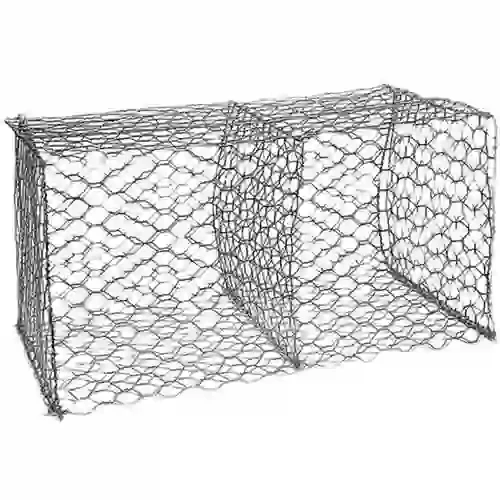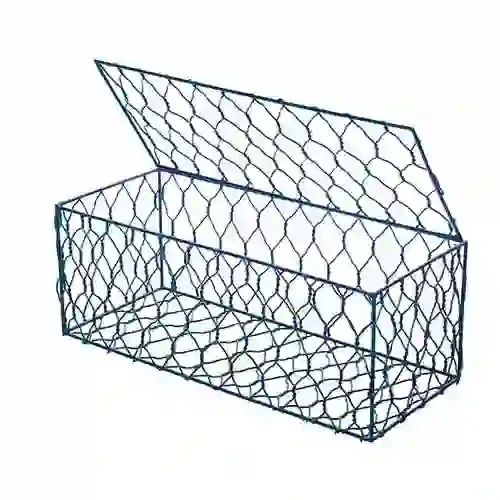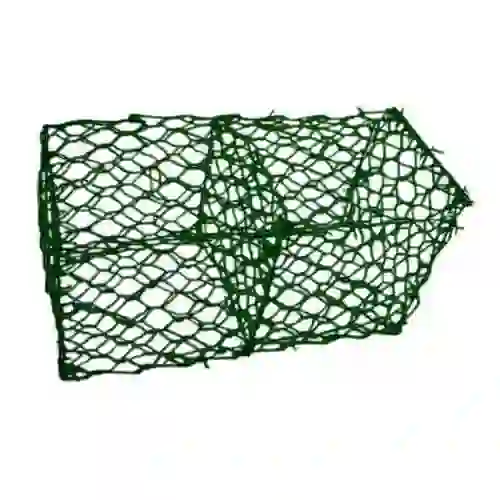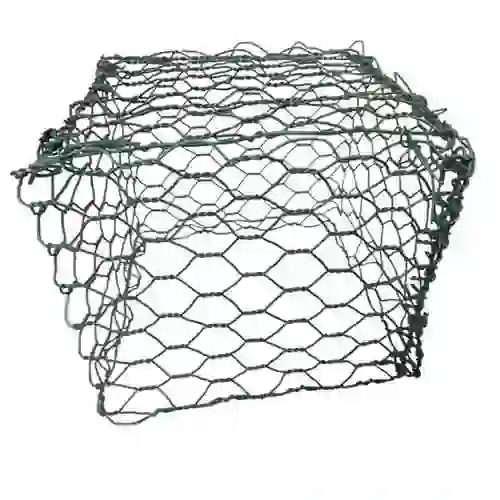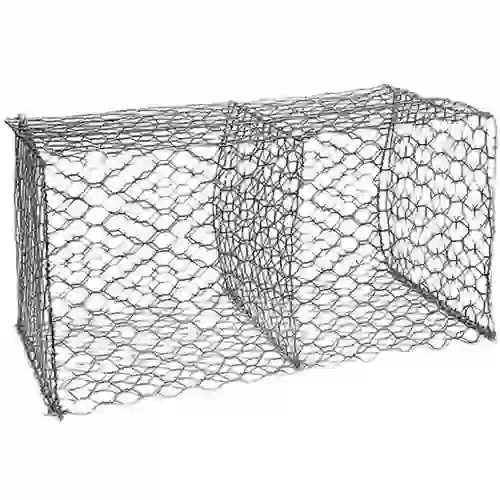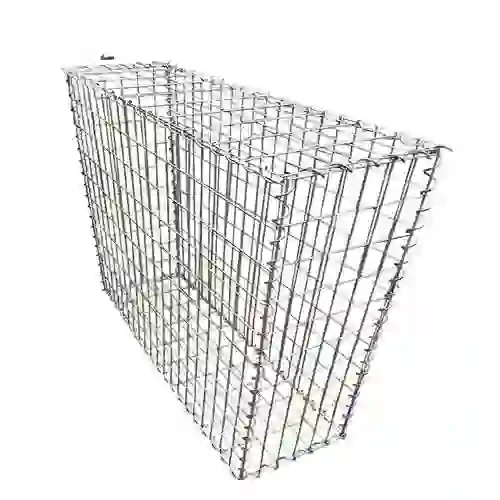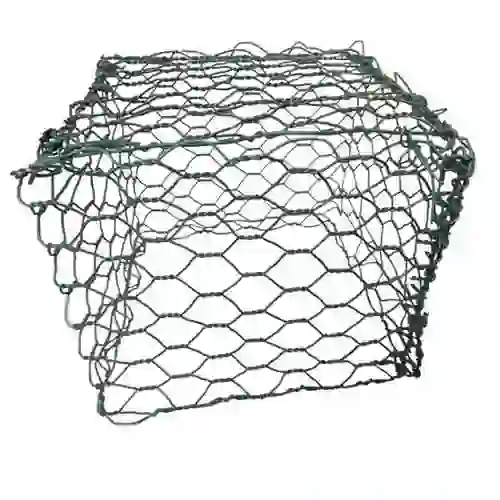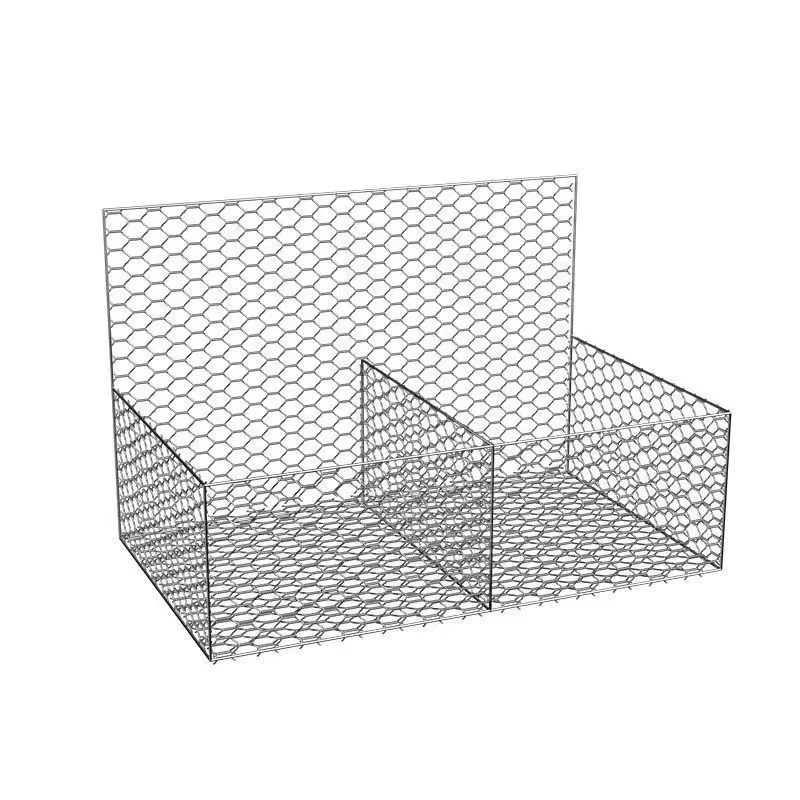-
 Phone:
Phone: -
 Email:
Email:

Gabion Wire Mesh Baskets for Strong Retaining Walls
Unlocking Stability and Sustainability: The Power of Wire Mesh Baskets Retaining Walls
In modern civil engineering and landscaping, the demand for robust, environmentally friendly, and aesthetically pleasing solutions for erosion control, soil stabilization, and structural support is ever-increasing. Among the most versatile and effective options are wire mesh baskets retaining walls, often known by their specific product name, Gabion fences. These modular structures, constructed from woven or welded wire mesh filled with natural stone, gravel, or other inert materials, offer a unique blend of flexibility, durability, and permeability, making them a preferred choice for a wide array of projects. The growth in demand for sustainable infrastructure has propelled the gabion market forward, with projections indicating a steady Compound Annual Growth Rate (CAGR) of over 4.5% from 2023 to 2030, driven by increased public and private investment in climate-resilient construction and eco-friendly landscaping solutions.
This comprehensive guide delves deep into the world of wire mesh baskets retaining walls, exploring their technical parameters, manufacturing processes, diverse applications, and inherent advantages. We will also address crucial aspects such as industry standards, customization options, and the trusted expertise of leading suppliers, ensuring you have all the information needed to leverage these innovative systems for your next project. From preventing landslides to creating visually appealing landscape features, wire mesh baskets retaining walls offer a solution that is both reliable and respects the natural environment.
Product Spotlight: Gabion Fence – The Core of Wire Mesh Baskets Retaining Walls
Our featured product, the Gabion fence, serves as an exemplary representation of high-quality wire mesh baskets retaining walls. Designed for maximum performance and longevity, these gabions are engineered to meet stringent international standards, ensuring reliability in even the most demanding environments. The flexibility of Gabion fence allows it to deform without losing integrity, adapting to ground movement and differential settlement, a significant advantage over rigid concrete structures.
Key Technical Parameters of Gabion Fence
Understanding the specifications of Gabion fence is crucial for proper design and application. The strength, durability, and longevity of the retaining wall depend heavily on these parameters. Below is a detailed table outlining typical specifications for high-quality Gabion fence products, reflecting common industry standards for wire mesh baskets retaining walls:
| Parameter | Typical Range/Value | Description |
|---|---|---|
| Wire Material | Low Carbon Steel Wire (ASTM A641/A856) | High-quality steel wire chosen for ductility and strength, crucial for the structural integrity of wire mesh baskets retaining walls. |
| Corrosion Protection | Hot-Dip Galvanized (HDG) / PVC Coated over HDG / Galfan (Zn-5%Al-MM) | HDG (min 260 g/m²) offers excellent rust resistance. PVC coating (min 0.5mm thickness) provides additional protection in aggressive environments (e.g., coastal, acidic soils). Galfan offers superior corrosion resistance compared to standard galvanizing. |
| Wire Diameter (Mesh Wire) | 2.0 mm to 4.0 mm (0.079" to 0.157") | Determines the strength and rigidity of the mesh panel. Larger diameter wires offer greater structural integrity. |
| Wire Diameter (Selvedge Wire) | Usually 0.5 mm to 1.0 mm thicker than mesh wire | Edge wires, often thicker, provide extra reinforcement to the gabion structure. |
| Mesh Size (Opening) | 50x70mm, 60x80mm, 80x100mm, 100x120mm, etc. | Common hexagonal double-twist or welded square/rectangular mesh sizes. Influences the type of infill material that can be used. Smaller mesh retains smaller rocks. |
| Gabion Basket Dimensions (L x W x H) | Standard: 2x1x1m, 3x1x1m, 4x1x1m, 2x1x0.5m, 3x1x0.5m, 4x1x0.5m, 1x1x1m | Modular sizes for easy stacking and construction of various wire mesh baskets retaining walls. Custom sizes available. |
| Tensile Strength (Wire) | Typically 380-550 N/mm² (ASTM A641) | The maximum stress the wire can withstand before breaking, ensuring the basket can handle the load of the fill material and external forces. |
| Elongation (Wire) | Min. 10% (ASTM A641) | The wire's ability to stretch before breaking, contributing to the flexibility and adaptability of the gabion structure to ground movement. |
| Durability/Lifespan | Galvanized: 25-50 years; PVC Coated: 50-100+ years | Estimated lifespan depends heavily on the coating type and environmental conditions. Proper installation enhances longevity. |
| Application Temperature Range | -40°C to +80°C (for PVC-coated) | Ensures the PVC coating remains stable and effective across a wide range of climates. |
These precise specifications are vital for engineers and contractors to ensure the structural integrity, long-term performance, and compliance of wire mesh baskets retaining walls with project requirements and environmental conditions.
The Art of Engineering: Manufacturing Process of Wire Mesh Baskets Retaining Walls (Gabion Fence)
The manufacturing of Gabion fence, which forms the robust backbone of wire mesh baskets retaining walls, is a precise multi-stage process that ensures product integrity, durability, and performance. Unlike traditional casting or forging, wire mesh production relies on advanced wire drawing, weaving/welding, and coating technologies. Our process adheres strictly to international quality management systems like ISO 9001, guaranteeing consistency and excellence.
Detailed Manufacturing Process Flow:
-
Wire Rod Selection & Quality Check:
Input: High-quality low-carbon steel wire rods. These raw materials are selected based on their chemical composition and mechanical properties to ensure they meet the required tensile strength and elongation for gabion wire (e.g., conforming to ASTM A641 standards). A crucial initial check ensures no impurities or structural defects are present.
[Diagram Placeholder: Raw Material Inspection & Wire Rod Storage]Illustrates incoming wire rods being inspected for quality and stored.
-
Wire Drawing:
Process: The thicker steel wire rods are drawn through a series of dies to reduce their diameter to the desired gauge (e.g., 2.0mm to 4.0mm). This process not only reduces the wire's diameter but also enhances its tensile strength and refines its grain structure, making it tougher and more ductile.
[Diagram Placeholder: Wire Drawing Machine]Shows wire being pulled through a die, illustrating diameter reduction.
-
Corrosion Protection (Galvanization/Galfan Coating):
Process: The drawn wires undergo meticulous cleaning (degreasing, pickling) before being immersed in a bath of molten zinc (for Hot-Dip Galvanization) or a zinc-aluminum alloy (for Galfan coating). This creates a durable, sacrificial coating that protects the steel core from rust and corrosion. The coating weight is precisely controlled (e.g., min. 260 g/m² for HDG) as per relevant standards (e.g., ASTM A90/A90M).
[Diagram Placeholder: Galvanizing/Galfan Line]Visual representation of wire moving through cleaning baths and then molten zinc/alloy.
-
PVC Coating (Optional, for Enhanced Protection):
Process: For applications in highly corrosive environments (e.g., marine, industrial areas), galvanized wires are further coated with a durable layer of Polyvinyl Chloride (PVC). This is typically achieved by extruding PVC onto the galvanized wire. The PVC layer acts as a robust barrier against chemical degradation, UV radiation, and abrasion. The minimum PVC thickness is usually 0.5mm (0.02 in) and is rigorously checked.
[Diagram Placeholder: PVC Extrusion Line]Shows galvanized wire entering an extruder for PVC coating.
-
Mesh Weaving or Welding:
Process: Depending on the type of gabion (double-twist woven or welded mesh), the wires are either woven together on specialized machines to form hexagonal mesh or individually welded at each intersection to form square/rectangular mesh. Our Gabion fences primarily utilize advanced double-twist weaving machines, which produce a mesh that is incredibly strong and flexible, preventing unraveling even if a wire breaks.
[Diagram Placeholder: Double-Twist Weaving Machine or Welded Mesh Machine]Visual of the mesh formation process, showing wires interlacing or being spot-welded.
-
Panel Cutting and Edge Reinforcement:
Process: The large rolls of woven or welded mesh are then cut into specific panel sizes (front, back, sides, lid, base, diaphragms) according to standard gabion dimensions. Selvedge wires, which are typically thicker, are either integrated during weaving or mechanically attached to the panel edges to provide extra strength and prevent deformation when the basket is filled.
[Diagram Placeholder: Cutting Station with Selvedge Wire Attachment]Illustrates precision cutting of mesh panels and attachment of heavier edge wires.
-
Folding and Assembly Preparation:
Process: The cut panels are then folded flat for economical shipping. For ease of assembly on-site, pre-formed folds and necessary lacing wire or connectors are prepared and packaged with the gabion units.
-
Quality Inspection and Packaging:
Standards: Throughout the entire process, rigorous quality control checks are performed at every stage. This includes dimensional accuracy, wire diameter, coating thickness (using X-ray fluorescence or magnetic induction methods), tensile strength, mesh opening size, and visual inspection for defects. Our products adhere to international standards such as ISO, ASTM (e.g., ASTM A975 for double-twist gabions), and EN standards, ensuring that every wire mesh baskets retaining walls unit meets the highest performance criteria. Once approved, the gabions are compactly bundled and packaged for shipment.
[Diagram Placeholder: Final QC and Packaging Area]Shows finished gabions being inspected and prepared for shipment.
This meticulous manufacturing process ensures that our Gabion fence products offer exceptional strength, flexibility, and longevity, making them an ideal choice for durable wire mesh baskets retaining walls.
Unrivaled Advantages and Diverse Application Scenarios of Wire Mesh Baskets Retaining Walls
Wire mesh baskets retaining walls, particularly those constructed with Gabion fences, offer a compelling array of technical and environmental advantages that set them apart from conventional construction materials like concrete or masonry. Their unique properties make them suitable for a vast range of industries and challenging environments.
Technical Advantages:
- Flexibility and Adaptability: Unlike rigid structures, gabions can tolerate differential settlement without fracturing. This makes them ideal for unstable ground conditions or areas prone to seismic activity. The inherent flexibility allows the wall to deform slightly, absorbing ground movement and maintaining structural integrity.
- Permeability and Drainage: The stone fill allows water to drain freely through the structure, eliminating hydrostatic pressure buildup behind the wall. This is a critical advantage, as hydrostatic pressure is a primary cause of failure in traditional rigid retaining walls. This property also makes them excellent for controlling stormwater runoff and preventing scour.
- Durability and Longevity: With high-quality galvanized or PVC-coated wire, gabions offer exceptional resistance to corrosion, abrasion, and weathering. Their estimated lifespan can range from 25 years for standard galvanized systems to over 100 years for heavily coated or marine-grade installations, requiring minimal maintenance.
- Strength and Stability: When filled with dense rock, gabion structures possess significant mass and interlocking strength, providing excellent resistance to lateral forces. The interlocking nature of the rock fill, combined with the tensile strength of the wire mesh, creates a remarkably stable and robust structure capable of resisting high loads.
- Environmental Friendliness: Gabions use natural, locally sourced infill materials, reducing transportation costs and carbon footprint. They promote vegetation growth within and around the structure over time, integrating seamlessly with the natural landscape and enhancing ecological habitats. This also contributes to reduced heat island effect compared to concrete.
- Cost-Effectiveness: While initial material costs might vary, the overall project cost is often lower due to reduced excavation, simpler foundation requirements, and the use of readily available local infill. Installation is typically faster than traditional methods, leading to savings in labor and equipment time.
- Energy Efficiency: The use of local rock fill and less energy-intensive manufacturing processes for wire mesh significantly reduces the embodied energy of wire mesh baskets retaining walls compared to concrete or steel-intensive structures. This contributes to lower carbon emissions over the project lifecycle.
Typical Application Scenarios:
The versatility of wire mesh baskets retaining walls means they are deployed across a vast spectrum of industries and environmental challenges:
- Erosion Control and River Training: Widely used in hydraulic engineering for river bank protection, weir construction, channel lining, and scour protection. Their permeability dissipates water energy, reducing erosion. This is crucial for maintaining waterway integrity and preventing land loss.
- Slope Stabilization and Retaining Walls: Essential for stabilizing unstable slopes, preventing landslides, and constructing robust gravity retaining walls along highways, railways, and in residential developments. They are particularly effective in areas with poor soil conditions or seismic activity. These structures often function as a superior alternative to traditional concrete structures, especially where wire mesh rock fence are preferred for their environmental integration.
- Road and Railway Embankments: Provide stable and flexible support for road and railway infrastructure, mitigating the risk of subsidence and erosion. Their ability to accommodate ground movement makes them ideal for critical transport routes.
- Coastal Protection: Employed in coastal zones for shoreline stabilization, breakwaters, and seawalls, protecting against wave action and tidal erosion. The permeability of gabions helps to dissipate wave energy effectively.
- Landscaping and Architectural Features: Beyond their engineering functions, gabions are increasingly used in modern landscape design for decorative walls, garden features, seating, and sound barriers. Their natural aesthetic blends well with various architectural styles, offering creative possibilities for a wire mesh rock fence.
- Noise Barriers: When filled with appropriate materials, gabions can effectively absorb sound, making them excellent choices for noise barriers along highways, industrial sites, or railway lines.
- Mine Reclamation and Landfill Sites: Used for slope stability, erosion control, and perimeter containment in challenging industrial environments.
- Bridges and Culvert Headwalls: Provide robust and flexible abutments and headwalls for bridge and culvert structures, adapting to differential settlement.
In all these applications, the inherent advantages of wire mesh baskets retaining walls — especially their anti-corrosion properties (due to superior galvanization and PVC coating) and flexibility — consistently deliver superior, long-lasting performance.
Choosing Your Partner: Manufacturer Comparison and Customization Solutions
Selecting the right supplier for wire mesh baskets retaining walls is as critical as the product itself. A reliable manufacturer not only provides high-quality Gabion fence but also offers comprehensive support, expertise, and customization capabilities tailored to specific project needs. While we cannot compare specific company names here, we can outline the key differentiating factors and capabilities that define a top-tier rockfall netting suppliers.
Key Differentiating Factors for Wire Mesh Baskets Retaining Walls Manufacturers:
- Material Quality & Sourcing: Leading manufacturers prioritize the use of virgin steel wire (not recycled scraps) and apply multi-layer corrosion protection (e.g., Galfan or thick PVC over HDG) ensuring superior longevity and performance. They provide certifications for their raw materials (e.g., mill certificates for steel).
- Manufacturing Technology & Process Control: Advanced automated production lines ensure consistent mesh size, wire diameter, and panel dimensions. Strict in-line and post-production quality control checks (e.g., ISO 9001 certified processes) minimize defects and ensure compliance with international standards like ASTM A975 or EN 10223-3. Look for manufacturers that explain their quality assurance protocols in detail.
- Engineering Support & Expertise: A top-tier supplier offers more than just products; they provide expert engineering consultation, design assistance, and technical guidance for complex projects. This includes advice on fill materials (e.g., optimal gravel netting requirements), structural design, and installation best practices.
- Certifications & Industry Compliance: Adherence to international standards (e.g., ISO 9001 for quality management, ISO 14001 for environmental management, relevant ASTM/EN/BSI standards for product specifications) is non-negotiable. Third-party certifications provide independent verification of product quality and manufacturing processes.
- Track Record & Experience: A long history of successful projects, positive client testimonials, and a portfolio of diverse applications demonstrate proven reliability and experience in various challenging environments. A company with 20+ years of dedicated experience in the wire mesh industry inherently brings a depth of knowledge.
- Logistics & Delivery Capabilities: Efficient supply chain management, global shipping capabilities, and timely delivery are crucial for large-scale projects. Manufacturers with optimized logistics can significantly reduce project lead times and associated costs.
- After-Sales Support & Warranty: Comprehensive warranty policies and responsive customer support are indicators of a manufacturer's confidence in their product and commitment to client satisfaction. This includes technical assistance during installation and troubleshooting.
Tailored Customization Solutions:
Recognizing that every project is unique, reputable rockfall netting suppliers provide extensive customization options for their Gabion fence products, enabling engineers and designers to achieve optimal results:
- Custom Dimensions: While standard sizes are available, we offer the flexibility to produce gabion baskets in custom lengths, widths, and heights to precisely fit specific site requirements and design aesthetics. This minimizes waste and labor during installation.
- Wire Diameter & Mesh Size Variations: Depending on the required strength and the infill material, wire diameters can be adjusted, and various mesh opening sizes (e.g., 60x80mm, 80x100mm, 100x120mm) are available to optimize stability and retention of the chosen aggregate.
- Specialized Coatings: Beyond standard HDG, options include heavier galvanization, Galfan coating for enhanced corrosion resistance, and specific colors of PVC coating to blend with the local environment or for architectural purposes. For marine applications, specialized high-density polyethylene (HDPE) coatings can also be explored.
- Diaphragm Configurations: For very long or tall gabion structures, internal diaphragms (cross-members) can be added at specific intervals (e.g., every 1 meter) to maintain the rectangular shape of the basket and prevent bulging when filled, improving overall stability.
- Integrated Components: Custom solutions can include integrated geotextile filters for specific drainage requirements, or specialized connectors and lacing wires designed for unique structural configurations.
- Pre-filled Gabions: For certain applications where site access is limited or installation speed is paramount, some manufacturers can offer pre-filled gabion mattresses or baskets, delivered ready for placement.
By leveraging these customization capabilities, designers can ensure that the wire mesh baskets retaining walls solution is perfectly aligned with the project's engineering, environmental, and aesthetic goals, leading to a more efficient and successful outcome.
Real-World Impact: Application Cases of Wire Mesh Baskets Retaining Walls
The practical application of wire mesh baskets retaining walls has demonstrated their efficacy across numerous challenging environments globally. These case studies highlight their adaptability, durability, and cost-effectiveness in diverse geotechnical and environmental projects, reinforcing confidence in their capabilities as a premier choice for stabilization and erosion control.
Case Study 1: Highway Embankment Stabilization (Mountainous Region)
- Challenge: A major highway expansion project in a seismically active, mountainous region faced severe erosion and slope instability issues, particularly during heavy rainfall. Traditional concrete walls were deemed too rigid for the dynamic ground conditions and environmentally intrusive.
- Solution: Over 10,000 cubic meters of Gabion fence (wire mesh baskets retaining walls) were installed along critical sections of the highway embankment. Baskets were filled with locally sourced river rock, and geotextile filters were integrated behind the walls to prevent fine soil washout while allowing water to drain freely.
- Outcome: The gabion structures successfully stabilized the slopes, preventing further erosion and landslides. Their inherent flexibility accommodated minor ground movements without structural damage. Post-construction monitoring over five years showed no signs of failure, even after multiple seismic events and extreme weather conditions. The natural rock infill also allowed vegetation to establish, blending the retaining walls seamlessly into the landscape.
- Client Feedback: "The wire mesh baskets retaining walls proved to be an excellent choice for our challenging terrain. Their adaptability and environmental benefits exceeded our expectations, delivering a durable and sustainable solution." - Project Engineer, Regional Transportation Authority.
Case Study 2: River Bank Protection (Urban Waterway)
- Challenge: An urban river stretch experienced severe bank erosion due to increased water flow velocity and fluctuating water levels, threatening public infrastructure and riparian habitats. The city required an environmentally sensitive solution that would also enhance the aesthetic appeal of the riverfront.
- Solution: Gabion mattresses (a form of shallow wire mesh baskets retaining walls) were extensively used to line the riverbanks. These PVC-coated gabions (to resist continuous submersion and chemical exposure from urban runoff) were filled with a mix of cobbles and smaller stones, promoting a natural, permeable bank profile. Specific sections utilized larger Gabion fence units to form small weirs for flow control.
- Outcome: The gabion system effectively dissipated water energy, halting bank erosion and stabilizing the riverbed. The permeable nature of the gabions facilitated groundwater recharge and allowed for the re-establishment of aquatic vegetation, improving water quality and ecological diversity. The rock netting cost was also significantly lower than a traditional concrete riprap solution, offering a more sustainable and economically viable option for the municipality.
- Service Case Detail: Our team provided comprehensive technical drawings and on-site training for the local contractors, ensuring precise installation and optimal performance. We also supplied specialized lacing tools and connecting wires for efficient assembly.
Case Study 3: Commercial Development Site Retaining Wall (Urban Infill)
- Challenge: A new commercial building project required a significant retaining wall to create level ground for construction on a sloped urban infill site. Space constraints and a desire for a contemporary aesthetic were key considerations.
- Solution: A multi-tiered wire mesh baskets retaining walls system was designed and implemented using stacked Gabion fence units. The gabions were filled with a combination of crushed concrete (recycled on-site fill) and decorative angular stone for the visible outer layer, meeting both structural and aesthetic requirements.
- Outcome: The gabion wall provided the necessary structural support, creating usable flat land for the development. The use of recycled aggregate reduced waste and transportation costs, contributing to the project's sustainability goals. The modern, textured appearance of the stone-filled gabions created a unique and appealing boundary for the commercial property. The speed of installation was also a significant benefit, allowing the construction schedule to stay on track.
These cases underscore the versatility, resilience, and environmental benefits that wire mesh baskets retaining walls, particularly Gabion fence, bring to civil engineering and landscape architecture projects worldwide.
Ensuring Credibility: Industry Authority & Certifications
Trust is built on demonstrable quality and adherence to established industry standards. As a leading provider of wire mesh baskets retaining walls, our commitment to excellence is underpinned by stringent certifications, robust partnerships, and a proven track record. This dedication to authoritative practices ensures that every Gabion fence unit delivered meets the highest benchmarks for performance, safety, and sustainability.
Our Commitment to Authority:
- International Quality Management System (ISO 9001:2015 Certified): Our manufacturing facilities and processes are certified under ISO 9001:2015, ensuring a consistent approach to quality management from raw material sourcing to final product inspection. This means every step in producing our Gabion fence is meticulously controlled and documented, guaranteeing product reliability.
- Adherence to Global Standards: Our wire mesh baskets retaining walls products consistently meet or exceed relevant international engineering and material standards, including:
- ASTM A975 (Standard Specification for Gabion Baskets and Mattresses): Specifically for double-twist hexagonal wire mesh gabions, covering wire material, coatings, mesh properties, and gabion dimensions.
- ASTM A641/A641M (Standard Specification for Zinc-Coated (Galvanized) Carbon Steel Wire): For the quality of the galvanized wire.
- ASTM A90/A90M (Standard Test Method for Weight [Mass] of Coating on Iron and Steel Articles with Zinc or Zinc-Alloy Coatings): For testing the thickness and adhesion of the zinc coating.
- EN 10223-3 (Steel wire and wire products for fencing and netting — Part 3: Steel wire mesh products for gabions): European standard defining requirements for gabion wire mesh.
- ISO 14001 (Environmental Management System): Demonstrates our commitment to minimizing environmental impact throughout our manufacturing operations.
- Strategic Industry Partnerships: We collaborate with reputable raw material suppliers and participate in industry associations dedicated to geotechnical engineering and environmental protection. These partnerships allow us to stay at the forefront of technological advancements and best practices in the field of wire mesh baskets retaining walls.
- Extensive Service Experience: With over two decades of specialized experience in the wire mesh industry, we have successfully completed thousands of projects globally, ranging from small-scale landscaping to large-scale infrastructure developments. This extensive experience translates into unparalleled expertise in product application and problem-solving.
- Authoritative Citations & Research: Our products are often referenced in engineering design guides and academic papers exploring sustainable construction methods. For instance, studies published in journals like the Journal of Geotechnical and Geoenvironmental Engineering frequently cite gabion structures for their performance in slope stability and erosion control, providing strong scientific validation for their use.
- Transparent Testing and Data: We provide detailed product data sheets, test reports (e.g., tensile strength, coating adhesion, salt spray tests), and material safety data sheets (MSDS) upon request. This transparency allows engineers and project managers to verify the quality and performance of our Gabion fence products, enhancing confidence and trust.
Our dedication to these authoritative measures ensures that when you choose our Gabion fence for your wire mesh baskets retaining walls, you are investing in a solution backed by proven quality, extensive expertise, and verifiable credibility.
Your Project, Our Priority: Trustworthiness, Support & FAQs
Building trust is paramount in every client relationship. Beyond product quality, our commitment to trustworthiness is reflected in our transparent processes, dedicated customer support, clear delivery schedules, and comprehensive warranty programs. We aim to provide a seamless experience from inquiry to project completion for all wire mesh baskets retaining walls solutions.
Ensuring Trustworthiness:
- Transparent Pricing & Quoting: We provide detailed, itemized quotations with no hidden costs, ensuring complete clarity for your budget planning.
- Delivery Cycle: Our standard delivery cycle for Gabion fence orders typically ranges from 15 to 30 business days, depending on the order volume, customization requirements, and destination. Expedited shipping options are available for urgent projects, subject to confirmation. We leverage robust logistics networks to ensure timely and efficient delivery worldwide.
- Quality Assurance & Warranty: All our Gabion fence products come with a comprehensive warranty against manufacturing defects. The warranty period for our galvanized Gabion fence is typically 5 years, while our PVC-coated options carry a warranty of up to 10 years, reflecting our confidence in their longevity and performance when correctly installed and maintained.
- Dedicated Customer Support: Our team of technical experts and customer service representatives is available to assist you at every stage, from initial consultation and design support to post-installation inquiries. We provide professional advice on material selection, installation techniques, and maintenance.
- Installation Guidance: We offer detailed installation manuals, video tutorials (where applicable), and direct technical support to ensure your wire mesh baskets retaining walls are assembled and filled correctly for optimal performance and longevity.
Frequently Asked Questions (FAQ) about Wire Mesh Baskets Retaining Walls:
Q1: What is the primary material used for Gabion fence?
A1: The primary material is high-quality, low-carbon steel wire. This wire undergoes a rigorous process, including drawing and then extensive corrosion protection through hot-dip galvanization (HDG), Galfan coating (a zinc-aluminum alloy), or a further Polyvinyl Chloride (PVC) coating over the galvanized wire for enhanced durability in aggressive environments.
Q2: What are the standard dimensions for Gabion baskets and can they be customized?
A2: Standard Gabion basket dimensions typically include 2x1x1m, 3x1x1m, 4x1x1m, 2x1x0.5m, 3x1x0.5m, 4x1x0.5m, and 1x1x1m (Length x Width x Height). Yes, our Gabion fences are highly customizable. We can produce baskets in specific non-standard lengths, widths, and heights to meet unique project requirements, optimizing material usage and installation efficiency.
Q3: How long do wire mesh baskets retaining walls last? What affects their lifespan?
A3: The lifespan of wire mesh baskets retaining walls largely depends on the type of corrosion protection and environmental conditions. Hot-dip galvanized gabions can last 25-50 years, while PVC-coated gabions (over galvanized wire) can extend this to 50-100+ years. Factors like soil corrosivity, water exposure, abrasion, and UV radiation can influence longevity, highlighting the importance of appropriate coating selection.
Q4: What type of infill material is recommended for Gabion fences?
A4: The ideal infill material for Gabion fences is well-graded, durable, non-frost-susceptible rock (such as granite, basalt, or limestone) that is typically between 75mm to 250mm (3-10 inches) in size, or 1.5 to 2 times the mesh opening size. The rocks should be angular to sub-angular to ensure good interlocking and minimal voids. The selection should consider local availability and the specific purpose, for example, suitable gravel netting is often used for smaller applications, while larger rock is typical for structural walls.
Q5: Are wire mesh baskets retaining walls suitable for seismic zones?
A5: Yes, gabion structures are highly suitable for seismic zones. Their inherent flexibility allows them to deform and absorb ground movements without cracking or fracturing, a significant advantage over rigid concrete structures. The mass of the rock fill also contributes to their stability during seismic events, making them a preferred choice for rockfall netting suppliers in such areas.
Q6: What are the environmental benefits of using Gabion fence?
A6: Gabion fences offer significant environmental benefits, including the use of local, natural fill materials (reducing transportation impact and embodied energy), permeability that allows for natural drainage and groundwater recharge, and their ability to facilitate vegetation growth, promoting biodiversity and blending seamlessly with the natural landscape. They are a truly sustainable engineering solution.
Q7: What is the typical installation process for wire mesh baskets retaining walls?
A7: The installation process involves: 1) Preparing a level foundation (often compacted soil or a lean concrete pad). 2) Assembling the flat-packed Gabion baskets by unfolding and lacing/connecting the panels together to form the box shape. 3) Placing the empty baskets in position. 4) Filling the baskets with the chosen rock infill, typically in layers to ensure proper compaction and prevent bulging. 5) Lacing the lids shut. For multi-tiered walls, each layer is installed atop the previous one, with careful alignment and connection.
The Future of Geotechnical Engineering: Embracing Wire Mesh Baskets Retaining Walls
As the global community increasingly prioritizes sustainable infrastructure and resilient design, the role of wire mesh baskets retaining walls is poised to become even more prominent. Their intrinsic flexibility, permeability, and ecological compatibility offer unparalleled advantages over conventional rigid systems, making them an indispensable tool in modern civil and environmental engineering. From critical erosion control in vulnerable coastlines to dynamic slope stabilization along vital transportation arteries, the Gabion fence system continues to prove its worth.
The innovation within the wire mesh baskets retaining walls industry is continuous, with ongoing research into advanced coatings, specialized mesh types, and optimized installation techniques further enhancing their performance and expanding their applications. By choosing solutions like our high-quality Gabion fence, engineers, developers, and government agencies can ensure projects are not only structurally sound but also environmentally responsible and aesthetically integrated.
Embrace the proven reliability and forward-thinking sustainability of wire mesh baskets retaining walls to build a more resilient and harmonious future.
References and Further Reading:
- Geotechnical Engineering Journal: "Permeability and Stability of Gabion Retaining Walls in Seismic Zones," Journal of Geotechnical and Geoenvironmental Engineering, American Society of Civil Engineers (ASCE). https://ascelibrary.org/journal/jggefk
- International Gabion Association Forum: Discussions and case studies on gabion applications and innovations. While a direct public forum link is not typically static, reputable industry associations like the International Gabion Association (often associated with major gabion manufacturers) host such resources. Search for "International Gabion Association" for more information.
- ASTM International Standards: For detailed specifications on wire mesh and gabion products. Specifically, ASTM A975 for gabions, ASTM A641 for galvanized wire, and ASTM A90 for coating weight. Access via ASTM's official website. https://www.astm.org/
- European Committee for Standardization (CEN): For European standards related to gabion products, such as EN 10223-3. Available through national standardization bodies or CEN's official website. https://www.cencenelec.eu/
-
Metal Products Company Galvanized Cable for SaleNewsAug.06,2025
-
Maintenance of Rock Wall with Wire MeshNewsAug.06,2025
-
Loop Tie Wire Cost Effective OptionsNewsAug.06,2025
-
High Quality Cable Cu Xlpe Swa Pvc SupplyNewsAug.06,2025
-
Durable Hexagonal Mesh Wire ProductsNewsAug.06,2025
-
Baling Wire Direct Reliable ServiceNewsAug.06,2025
-
Wire Mesh for Every Need: A Practical SolutionNewsJul.25,2025

